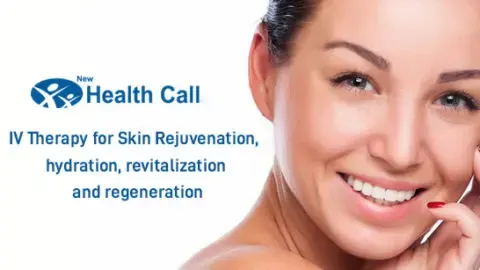
As a lack of vitamin D is linked to various diseases and the return of rickets, Glenda Cooper discovers why a winter top-up is good for you
There is a miracle substance that has been linked to beating cancer, heart disease, tuberculosis and diabetes. It doesn’t cost anything, can be made within minutes, and lasts in the body for months.
And while it is readily available in the south of England, it is denied to those in Scotland and the North.
The substance? Vitamin D, created when the skin is exposed to sunlight. And far too few of us are getting enough of it. While experts recommend that we produce between five and 25 micrograms per day, 90 per cent of adults in the UK make less than three.
The situation is worst for those north of around 52 degrees latitude – a line level with Birmingham – because the winter sun is too weak for this vital vitamin to be produced. Yet many of the rest of us have either been scared by the threat of skin cancer into staying out of the sun, or do not eat enough oily fish, another source of the vitamin.
By failing to get enough, we are not only missing out on protection from killer diseases, but exposing ourselves to conditions such as rickets, a disease prevalent in Victorian slums that had been largely eradicated in the 1950s.
“No one is paying this any attention,” warns consultant paediatrician Dr Colin Michie, of Ealing Hospital in west London, who sees a new case of rickets every month and seizures linked to a lack of vitamin D every two weeks. “It’s completely preventable, and getting worse.
The children I see are the tip of the iceberg; there will be lots out there not getting enough vitamin D. That is a real public health problem which will have ramifications in the future.”
Compared to the attention A, C, and E enjoy, vitamin D has largely been overlooked. This is perhaps because it works in a different way: while we get the others directly from food, vitamin D can be produced when the skin is exposed to sunlight.
It can, unlike vitamin C, remain in the body for months, because it is soluble in fat. And we are only just beginning to understand its full benefits.
Last week, a report in the prestigious US journal Proceedings of the National Academy of Sciences revealed that people with higher levels were more likely to survive colon, breast and lung cancer. This follows last year’s University of San Diego review of 40 years of research, which revealed that a daily dose could halve the risk of breast and bowel cancer.
Other claims are that it reduces the risk of heart disease (a study of 10,000 women in California found that those who took supplements had a 31 per cent lower risk of dying from it), diabetes (in a Finnish study of 12,000 children, it cut their chance of developing Type A diabetes by 80 per cent), even colds and flu (New Yorkers who took vitamin D had flu 70 per cent less often).
Yet despite this increasingly compelling evidence, too many of us are not getting enough. The result: a resurgence in rickets, which stunts growth and deforms the skeleton, causing bowed legs.
In Birmingham Children’s Hospital, doctors report seeing children with swollen ankles and wrists and the “rachitic rosary” – swellings around the bone and cartilage in the ribs that look like rosary beads.
In Bradford, £50,000 has been spent in giving vitamin drops to all children under five after a four-year study found that more than 300 children were deficient in vitamin D. Another study in Bristol found similar figures.
One of those who went into their doctors’ surgery in Bristol was Ilhan Omar, now 13. Her mother Maryan said she first took her daughter to the doctor when she was nine.
“Ilhan started complaining that her legs hurt,” she said. “They would hurt for about 15-20 minutes at a time. Sometimes she was finding it difficult to walk. I could not think what might be wrong with her.”
Ilhan was given a vitamin D injection and now takes daily tablets. She was lucky she had a doctor who recognised the warning signs before she became permanently deformed. She was in particular danger because of two things: her skin colour and her dress.
Originally from Somalia, Ilhan requires more sun to create enough vitamin D via her skin. It is thought that up to one in 100 ethnic minority children in this country may suffer from rickets. This was compounded by the fact that both Maryan and Ilhan covered up by wearing the hijab; Ilhan now does not wear her hijab to school.
“Families from ethnic minorities and who wear religious dress are particularly at risk,” says Julie Mytton, a Bristol GP. “These communities may not be aware that there are free vitamin supplements available. But actually, anyone can be at risk if they don’t get enough sun and aren’t eating a good diet.”
Although children are at risk because skin cancer fears keep them indoors in sunny weather, elderly people living in residential homes may also be vulnerable. So are pregnant women: if they do not have sufficiently high levels of vitamin D, it can stunt healthy bone formation in their child.
Dr Mytton believes that vitamin D may not have got the profile it deserves because – put bluntly – there’s no money in it.
“A single injection that lasts six months costs £10, and people can make it from sunlight or get it from their diet,” she says. “You have to ask whether it’s been neglected in the past because it’s not commercially valuable.”
Yet that may be changing. The Department of Health offers free drops containing vitamin D to children up to the age of four, and to pregnant women whose families are on benefits.
A study carried out by Chris Griffiths, professor of primary Care at Barts teaching hospital in east London, has found that a dose of the vitamin strengthens the immune system against tuberculosis; a further study is under way to see whether giving vitamin D supplements (at 60p per dose) would help clear up TB cases more quickly, thereby limiting its spread and cutting the number of new cases per year from 8,000.
“This is potentially a very big step forward,” says Prof Griffiths. “Particularly as there are growing concerns about antibacterial resistance to TB. This could prove very effective.”
The experts also warn that while sunshine is the easiest and cheapest way to get enough vitamin D, this should not mean a return to tanning: a few minutes of exposure would be enough.
- 90 per cent of the body’s supply of vitamin D is generated by reaction to sunlight on the skin
- Vitamin D is found in oily fish like sardines, salmon, mackerel and tuna, cod liver oil, and in milk, cheese, eggs and liver.
- “Healthy Start” supplements for children up to the age of four are given free to those on benefits but can also be bought for £1.70 at pharmacies or health clinics.
- The first mention of rickets is credited to Daniel Whistler, an English doctor who wrote a paper in 1645 on the subject.
- Vitamin D was named in 1922 by the American biochemist Elmer McCollum, who performed experiments to find the nutrients within cod liver oil. It was so called because it was the fourth substance he identified.
- One in 100 children from ethnic minorities in this country is thought to be deficient in vitamin D; darker skin requires more sun to produce the vitamin.
- In 2003 a New York couple were convicted of endangering the life of their 15-month-old baby after subjecting her to a strict vegan diet which left her suffering from rickets. Silva and Joseph Swinton were sentenced to six and five years in jail.
- The classic signs of rickets are bow legs caused by softening of the bones; if not detected early surgery is needed to correct it.
- Most people can make enough vitamin D in the summer to last them through the winter months.
Source :https://www.telegraph.co.uk/news/health/3352979/Vitamin-D-the-miracle-cure.html
Recent Posts
-

Infections spread from one person to another by sexual contact are known as sexually transmitted diseases (STDs) or sexually transmitted infections (STIs)... Read more
March 17, 2025 -

This intravenous treatment for your skin is the most natural anti-aging treatment. You can stop the aging process in a much simpler way.
March 17, 2025 -

Vitamin C (also known as ascorbic acid) is abundant in vegetables and fruits. A water-soluble vitamin and powerful antioxidant, it helps the body form and maintain connective tissue, including bones, blood vessels, and skin.
March 17, 2025 -
.webp)
Freckles are harmless clusters of hyperpigmented skin lesions also known as Ephelides. Freckles appear as small brown flat spots scattered mostly across the face, back shoulders and chest area.
April 22, 2024 -
.webp)
Laser hair removal procedure is the most-advanced method of hair removal. It is a cosmetic procedure that uses laser pulses targeting the hair roots, compared to traditional methods of shaving, and plucking the superficial hair. The hair follicles will be destroyed through the process of selective photo thermolysis. This process involves the use of a laser source to produce heat precisely targeting the melanin pigment of the hair. The heat will damage and hair root inhibiting the hair growth and normal hair cycle.
April 18, 2024




